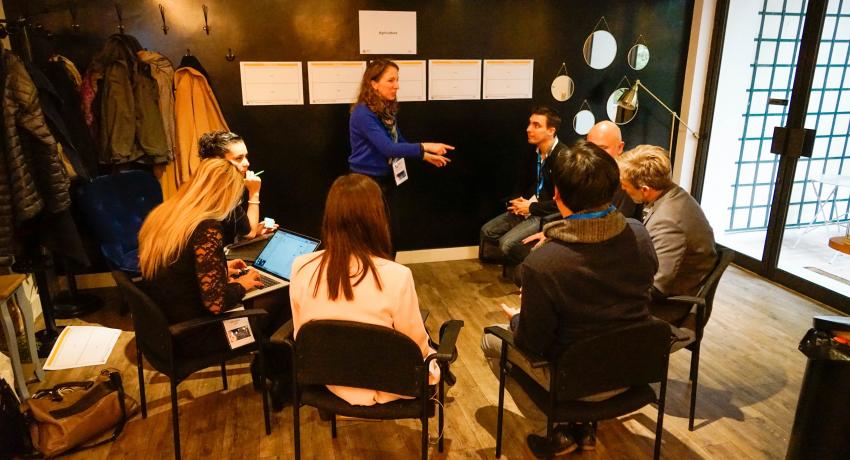Organised as part of the S2S4E project, the Climate Sprint took place in Paris, on 13 November. Gathering more than 40 participants coming from all over Europe, this day-long innovation camp included panel sessions and problem-solving workshops to help understand how climate information for sub-seasonal and seasonal timescales can be used to make better decisions.
“A deeper understanding of the climate services market will allow us to invest where it is the most competitive and to support its key vulnerable links”, claimed Thanh-Tâm Le, Managing Director at Climate-KIC France, in his opening speech. In a world where climate change is leading to uncertainty, predicting climate variability for sub-seasonal and seasonal periods is about to become crucial. As changes do not only affect consumer demand but also supply logistics, being able to predict and make the best decisions in advance would allow organisations to minimise the risks that climate change poses. On this basis, Climate Sprint participants get the opportunity to discover and heard about different climate services tools in the insurance sector, agriculture, space and skiing industry.
Considering farmers, “they need climate services integrated with other models to support their decisions in short, medium and long terms, explained Eric Mino (SEMIDE). Changing farmers habits and making them understanding uncertainty of climate services will require time.” On the other hand, Andrea Damm (Joanneum Research) observed that “ski resorts are already using forecasting tool for snow management, but there is no widespread use of climate services.”
Why use the Decision Support Tool?
The S2S4E project, its main objectives and key achievements such as the development of the Decision Support Tool (DST) were presented by Isadora Jimenez (Barcelona Supercomputing Center): “Decisions are complex, and you never know if you are facing an extreme decision or not. Thanks to the DST, the type of decisions and the type of people who is making decisions will be facilitated. We delivered the DST in one year, but it will get running improvements.” Isadora also showed how to use the DST and which types of forecasts users can access.
Thereafter, Joan Miquel Anglès (Nnergix) gave a short presentation on how climate services and the DST bring value to the energy sector. “Drivers of the energy market are complex, but the value of the DST to the market players is that it can help them to take very good decisions by providing deep knowledge of forecasts”, he explained. Lastly, the DST can find applications in the hydropower sector. For instance, “there is a link between quality and value of forecast services for the hydropower sector: better forecasts mean higher value”, considered Ilias Pechlivanidis (Swedish Meteorological and Hydrological Institute). “There is a need for stronger engagement between service providers and users. Guiding tools and seamless forecasting can drive the coevolution of knowledge and services”, he believed.
Evaluating the DST replicability
Through four coaching and problem-solving workshops, Climate Sprint participants worked together to seek solutions to reduce the impact of climate variability in the sectors previously presented (insurance, tourism, agriculture and food). They had to find the pains and gains before establishing a ranking of impacts for each gain and pain. The overall idea was to test the DST replicability to expand its use to other sectors in addition to the energy field.
Further information and photos
For more information on the Climate Sprint, including speakers’ presentations, please go to event page here.
For photos, please refer to the photo gallery here.


